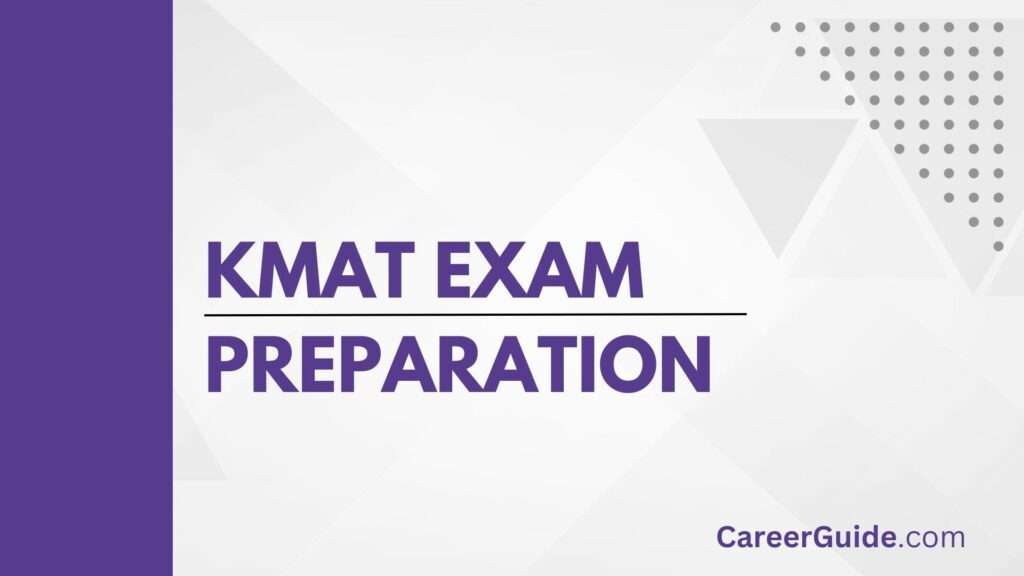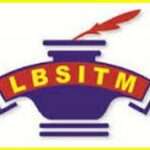KMAT Exam Fees: The Karnataka Management Aptitude Test (KMAT) is a state-level management entrance examination conducted by the Karnataka Private Post Graduate Colleges Association (KPPGCA). KMAT is a gateway for admission to MBA, PGDM, and MCA programs offered by various B-schools and universities in the state of Karnataka.
To succeed in KMAT, it’s crucial to have a comprehensive understanding of the exam syllabus. In this extensive guide, we will explore the KMAT syllabus in detail, covering various aspects of each section, key topics, and preparation strategies.

KMAT Exam Overview
Before diving into the specifics of KMAT exam fees, let’s briefly understand what the KMAT exam is all about.
Purpose: The KMAT exam is conducted to assess the aptitude and skills of candidates seeking admission to postgraduate management and computer application programs.
Conducting Authority: The Karnataka Private Post Graduate Colleges’ Association (KPPGCA) is responsible for organizing the KMAT exam.
Eligibility: The eligibility criteria for KMAT may vary slightly from year to year. Typically, candidates should have a Bachelor’s degree with a minimum percentage (usually 50% for general category and 45% for reserved category candidates) from a recognized university.
Exam Pattern: KMAT is a pen-and-paper-based test comprising multiple-choice questions (MCQs). The test assesses a candidate’s proficiency in subjects like Language Comprehension, Mathematical Skills, Basic Aptitude, and Logical Reasoning.
Participating Institutions: Several B-schools and universities in Karnataka accept KMAT scores for admission, making it a crucial exam for MBA and MCA aspirants in the state.
KMAT Exam Fees
Now, let’s delve into the specifics of KMAT exam fees:
Fee Structure: The KMAT exam fee structure may vary from year to year, and it can also differ for various categories of candidates. Typically, there are separate fee structures for different courses like MBA and MCA.
General Category Candidates: As of my last knowledge update in September 2021, the KMAT exam fee for general category candidates ranged from approximately INR 800 to INR 1000. This fee includes the cost of the application form and the exam.
Reserved Category Candidates: Candidates belonging to reserved categories, such as SC/ST, might be eligible for a reduced fee. This fee could be around INR 500 to INR 700. However, it’s essential to check the latest fee structure when applying for the exam, as it may have changed since my last update.
Mode of Payment: KMAT exam fees can usually be paid online through various modes, including credit/debit cards, net banking, and other digital payment methods. Detailed payment instructions are provided during the registration process.
Late Fee: It’s crucial to note that KMAT has specific deadlines for registration. If a candidate misses the regular registration window, they may still be able to apply during the late registration period. However, late registration often incurs an additional fee.
Refund Policy: KMAT’s refund policy may vary, so candidates should carefully read the terms and conditions regarding fee refunds on the official website.
Fee Waivers: In some cases, candidates facing financial hardship might be eligible for fee waivers or concessions. Such provisions, if available, are usually mentioned in the official notification.
Study Materials and Resources
A. Official KMAT Syllabus:
- Start by familiarizing yourself with the official KMAT syllabus. The syllabus outlines the topics and areas that are covered in the exam.
- The syllabus typically includes subjects such as English language skills, mathematics, and logical reasoning.
B. KMAT Previous Year Question Papers:
- Obtain previous year question papers for KMAT. These papers are valuable resources for understanding the exam pattern and practicing actual exam questions.
- Solving previous year papers helps you gauge your preparedness and identify areas where you need improvement.
C. KMAT Preparation Books:
- Invest in high-quality preparation books specifically designed for KMAT.
- Look for books that cover all sections of the exam and include practice questions with explanations.
- Popular publishers often release comprehensive study guides for management entrance exams like KMAT.
D. Online Study Materials:
- Explore online platforms that offer study materials and practice tests for KMAT.
- Many websites and apps provide free or paid resources, including video lectures, practice quizzes, and study guides.
E. Coaching Institutes:
- Consider enrolling in a reputable coaching institute that specializes in MBA entrance exam preparation.
- Coaching classes can provide structured guidance, expert faculty, and a competitive learning environment.
Section-Wise Preparation
A. Verbal Ability and Reading Comprehension (VARC):
- This section assesses your English language skills, vocabulary, and reading comprehension.
- Read newspapers, magazines, and quality literature to enhance your reading and comprehension abilities.
- Practice vocabulary exercises and grammar to improve language proficiency.
- Solve reading comprehension exercises regularly to sharpen your comprehension skills.
B. Quantitative Ability (QA):
- QA evaluates your mathematical and quantitative reasoning skills.
- Brush up on fundamental mathematical concepts, including arithmetic, algebra, geometry, and statistics.
- Practice solving quantitative problems regularly to build speed and accuracy.
- Utilize shortcut methods and tricks for faster calculations.
C. Logical Reasoning (LR):
- LR tests your logical and analytical reasoning abilities.
- Solve puzzles, riddles, and brain teasers to enhance your logical thinking.
- Practice solving various types of logical reasoning questions, such as syllogisms, analogies, and coding-decoding.
- Work on improving your analytical skills by breaking down complex problems into simpler steps.
Time Management
A. Create a Study Schedule:
- Develop a well-structured study schedule that allocates sufficient time to each section of the exam.
- Stick to your schedule and maintain consistency in your study routine.
- Set realistic daily and weekly goals to track your progress.
B. Mock Tests and Practice:
- Take full-length mock tests regularly to simulate exam conditions.
- Analyze your performance in mock tests to identify areas where you need improvement.
- Focus on time management during mock tests to ensure you can complete all sections within the allocated time.
C. Sectional Time Allocation:
- During the actual exam, manage your time effectively by allocating specific time limits to each section.
- If you find a particular section challenging, consider temporarily moving on to the next section to maximize your overall score.
Problem-Solving Strategies
A. Work on Weak Areas:
- Identify your weakest areas within each section and allocate more time to practice and improve them.
- Seek additional help, such as online tutorials or guidance from mentors, to address challenging topics.
B. Practice Regularly:
- Consistent practice is key to success in KMAT.
- Solve a wide range of questions, including easy, moderate, and challenging ones, to build your problem-solving skills.
C. Review and Learn:
- After attempting practice questions and mock tests, review your answers, both correct and incorrect.
- Understand the reasoning behind correct answers and learn from your mistakes to avoid repetition.
Stay Informed and Updated
A. Keep Abreast of Current Affairs:
- Stay informed about current affairs, business news, and general knowledge.
- Current affairs are often part of the GK section in management entrance exams.
B. Follow Official Updates:
- Regularly check the official KMAT website and notifications for updates on exam dates, pattern changes, and other important information.
Revision and Final Preparation
A. Revision Schedule:
- Allocate sufficient time for revision, especially in the weeks leading up to the exam.
- Review important concepts, formulas, and strategies during your revision.
B. Solve Sample Papers:
- In addition to previous year question papers, solve sample papers specifically designed for KMAT.
- Sample papers often provide additional practice and can help you gauge your readiness for the exam.
C. Mock Test Analysis:
- Continue taking mock tests, but focus on analyzing your performance rather than simply attempting them.
- Identify recurring mistakes and work on eliminating them.
D. Time-Based Practice:
- In the final weeks of preparation, focus on timed practice to ensure you can complete the entire exam within the allotted time.
E. Stay Healthy and Rested:
- Prioritize your physical and mental well-being during the final days of preparation.
- Avoid last-minute cramming and get a good night’s sleep before the exam.
Exam-Day Preparation
A. Plan Your Journey:
- On the day of the exam, plan your journey to the exam center in advance.
- Ensure you have all the necessary documents, such as your admit card and identification.
B. Reach Early:
- Arrive at the exam center well before the reporting time to avoid any last-minute rush or stress.
C. Stay Calm and Focused:
- Maintain a calm and focused mindset throughout the exam.
- Don’t let challenging questions disrupt your concentration.
D. Read Instructions Carefully:
- Read all instructions provided in the exam paper and on the computer screen carefully.
E. Manage Time:
- Allocate time wisely to each section and monitor the clock to ensure you complete the exam on time.
F. Review Your Answers:
- If time permits, review your answers before submitting the exam.
G. Post-Exam Analysis:
- After the exam, avoid discussing answers with other candidates, as this can lead to confusion and anxiety.
- Focus on your post-exam plans, such as applying to management institutions based on your KMAT scores.
FAQs
A: The ideal preparation time for the KMAT exam depends on your individual strengths and weaknesses. However, most experts recommend that candidates start preparing for the exam at least 3 months in advance. This will give you enough time to cover all of the topics, practice solving questions, and take mock tests.
A: There are many good books and resources available for KMAT exam preparation. Some of the most popular ones include:
- KMAT Prep 7 Books Set by Arun Sharma
- KMAT Pathfinder by Arihant Publications
- KMAT Explorer by Pearson
- KMAT Official Mock Test Series by KSPITTC
A: The first step in creating a KMAT exam preparation plan is to identify your strengths and weaknesses. Once you know where you need to improve, you can start developing a plan for covering all of the topics.
Here are some tips for creating a KMAT exam preparation plan:
- Set realistic goals. Don’t try to cover too much too soon. Break down the syllabus into smaller chunks and focus on one topic at a time.
- Create a schedule and stick to it. Set aside a specific amount of time each day for KMAT exam preparation.
- Use a variety of resources. Don’t just rely on one textbook or resource. Use a variety of books, online resources, and practice tests to prepare for the exam.
The best way to practice for the KMAT exam is by taking mock tests. Mock tests will help you get used to the format of the exam and the types of questions that are asked. You can find mock tests online and in many KMAT preparation books.
Here are some tips for practicing for the KMAT exam:
- Take mock tests under timed conditions. This will help you get used to the pressure of the exam.
- Analyze your performance after each mock test. Identify your areas of weakness and work on improving them.
- Take breaks while practicing. Don’t try to study for hours on end without taking a break.
On the day of the KMAT exam, it is important to arrive at the test center early. This will give you enough time to check in and find your seat.
Here are some additional tips for the day of the KMAT exam:
- Bring a valid photo ID and your KMAT admit card.
- Dress comfortably and in layers.
- Bring a watch, water bottle, and snacks.
- Read the instructions carefully before you start the exam.
- Don’t rush. Take your time and answer each question carefully.










